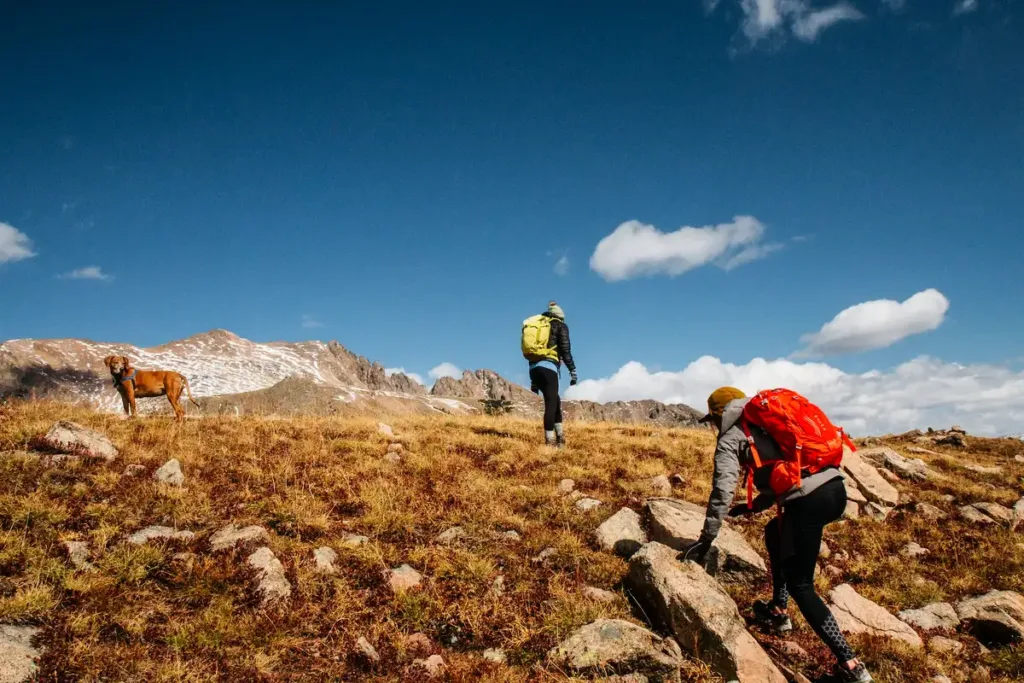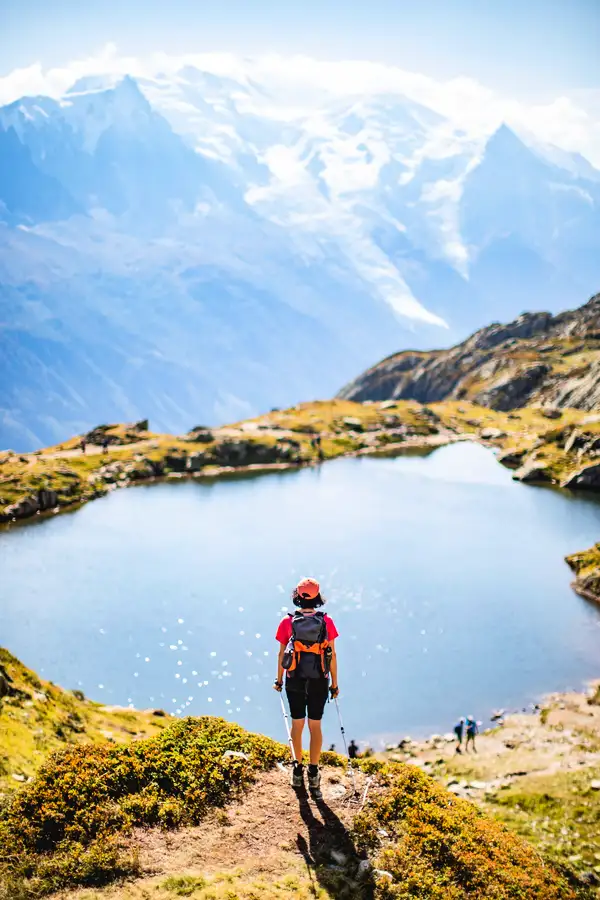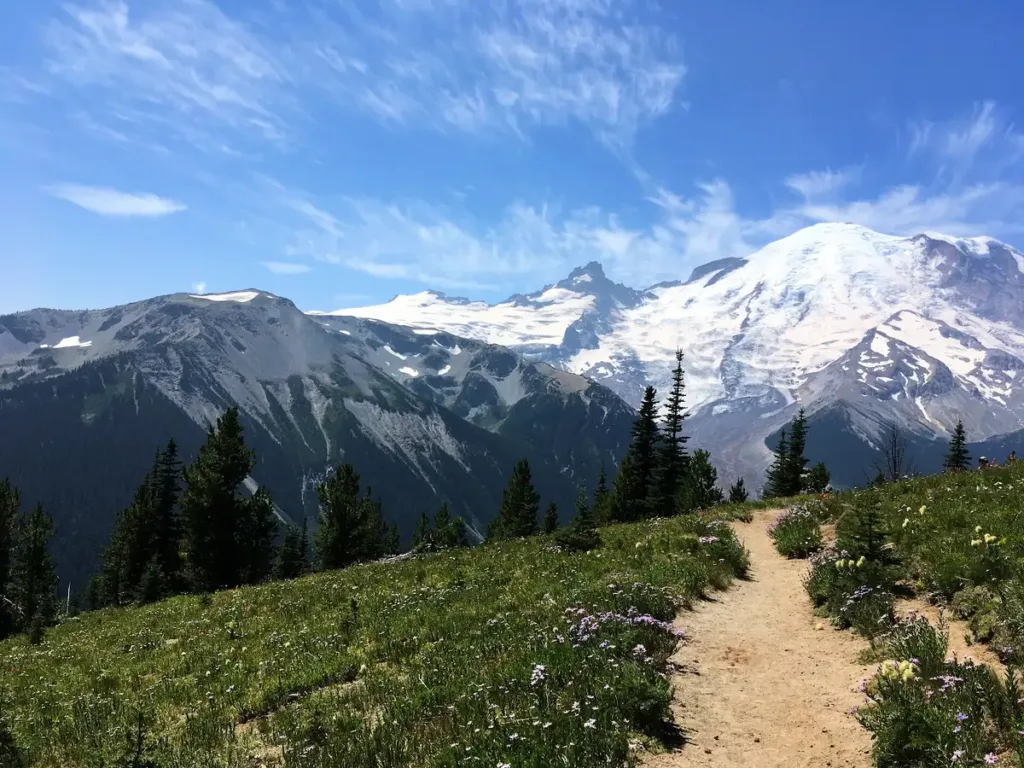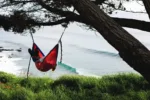Ultralight Hiking vs. Fastpacking – Which is Right for you?
This post may contain affiliate links. This means that we may receive a small commission from purchases through those links. Read more in our affiliate disclosure.
In the vast expanse of nature, we’re simply tiny explorers on a quest for awe-inspiring views, pushing our limits, and discovering ourselves. The call of the wilderness can be answered in many ways. Some prefer the careful deliberation of Ultralight Hiking, with each piece of gear meticulously weighed and considered. Others favor the pulsating rhythm of Fastpacking, the exhilarating blend of running and backpacking. While both methods share a common passion for the great outdoors, their philosophies can be as varied as the trails they traverse.
Ultralight Hiking and Fastpacking are both techniques designed for efficient wilderness travel, but they have different objectives and requirements. Ultralight Hiking focuses on minimizing pack weight to enhance comfort and enjoyment of the journey, typically covering 10-20 miles a day. Fastpacking, combining running and backpacking, aims for speed and endurance, often covering over 20 miles a day.
The gear for both approaches prioritizes lightness, but fastpacking gear emphasizes speed and durability. Safety considerations differ too, with Ultralight Hiking requiring careful gear selection and Fastpacking demanding robust physical conditioning and quick response to emergencies.
Personal preferences play a significant role in choosing the approach, with Ultralight Hiking appealing to those who value thorough exploration and Fastpacking to those who seek physical challenge and long-distance coverage. The right choice depends on individual goals, fitness, outdoor skills, and the kind of wilderness experience desired.

What is Ultralight Hiking?
Ultralight Hiking is a method of exploration places paramount importance on shedding excess weight, freeing hikers from the chains of heavy backpacks. An ultralight hiker’s pack usually weighs under 10 pounds, excluding food and water. It’s like a magic show – everything superfluous vanishes, leaving only the bare essentials. This weight-conscious philosophy doesn’t just apply to your pack but extends to your mindset, teaching you to find comfort in minimalism and freedom in the lightness of your steps.
Yet, there’s more to Ultralight Hiking than just cutting weight. It’s about making careful choices, optimizing for efficiency, and learning to adapt to the wilderness with fewer resources. It challenges your decision-making and creativity: how can you reduce weight without compromising your safety and comfort? These questions lead to fascinating solutions – quilts instead of sleeping bags, tarps or hammocks instead of tents, tablets for water purification instead of bulky filters. It’s not just about getting from point A to point B, but rather about how gracefully you can dance with nature along the way.
What is Fastpacking?
Fastpacking. The name itself is energetic, urging us onward. It’s the high-octane cousin of backpacking, a turbo-charged quest that combines the aerobic challenge of trail running with the self-sufficiency of hiking. A fastpacker’s gear is similar to an ultralight hiker’s, but with an extra dash of speed and endurance stirred into the mix.
Your goal as a fastpacker is to cover as much ground as possible while still carrying enough gear to sleep and eat in the wilderness. Fastpackers often wake with the sun and keep moving until the last rays of daylight fade. Their gear is chosen with a brutal efficiency – only items that are both lightweight and useful for the fast-and-long approach make the cut. There’s an element of ruthlessness in fastpacking, but also a breathtaking thrill. You’re constantly balancing on the edge, pushing boundaries, and redefining what’s possible.
Fastpacking isn’t just about speed though, it’s about endurance. It’s about teaching your body to conserve energy over long distances and rough terrains. It’s about finding a rhythm in your steps that respects your body’s limits while still driving you forward. There’s a meditative quality to it, a rhythm that connects you deeply with the trail. Your world becomes the path ahead, the air in your lungs, and the rhythmic pounding of your heart.
Gear Comparison of Ultralight hiking vs Fastpacking
Gear forms the backbone of both Ultralight Hiking and Fastpacking. It’s a marriage of necessity and innovation, with the goal of striking the perfect balance between weight, functionality, and durability.
Ultralight Hiking Gear
The gear in an Ultralight Hiker’s pack is a minimalist’s dream. It’s a carefully curated collection, scrutinized down to the very last gram.
Shelter systems are often lightweight tarps, bivies, or minimalist single-wall tents. Sleeping systems may consist of a quilt and a lightweight sleeping pad. Instead of full-sized stoves, alcohol or tablet stoves are preferred, or in some cases, hikers choose to go stoveless, opting for cold, ready-to-eat food.
Clothing is limited to the bare essentials, chosen for maximum versatility and layering. A backpack is often frameless or has a minimal frame, with a focus on weight reduction rather than load support.
For navigation, hikers may rely on lightweight, multifunctional devices such as smartphones with preloaded maps or small GPS units.
Fastpacking Gear
Fastpacking gear, while similar in the need for lightness, has an added emphasis on speed and longevity. Fastpackers often opt for lightweight running vests over traditional backpacks for better weight distribution and ease of access on the move.
Shelters are chosen for quick setup and breakdown; bivy sacks or single-wall tents are favorites. Sleeping systems tend to be minimalist, such as lightweight quilts that can cover a broad range of temperatures.
Fastpackers often use compact, efficient cooking systems that can boil water quickly for rehydrating meals. Hydration systems are designed for on-the-go access, frequently using hydration bladders or handheld water bottles for quick and easy drinking.
Clothing is lightweight, quick-drying, and chosen for layering and adaptability to varying weather conditions. Navigation systems need to be quickly accessible and easy to use while on the move.
Trade-Offs
In both Ultralight Hiking and Fastpacking, gear choice represents a series of trade-offs. Carrying less weight can mean giving up some comforts. A lighter load can enable faster travel, but might require more careful resource management.
When selecting gear, it’s essential to consider the conditions you’ll encounter. For example, if you’re hiking in an area with a lot of rain, a lightweight but sturdy waterproof tent may be worth the weight. Similarly, in colder conditions, a lightweight yet warm sleeping bag becomes crucial.
In the end, gear is a tool to help you engage with the wilderness in the way you choose. Whether you are a meandering maestro of ultralight hiking or a speed demon fastpacker, the right gear will make your symphony with nature all the more beautiful.

Speed and Distance
Speed and distance set the tempo for our hike or fastpack. They’re tied to our goals, fitness levels, and the landscapes we navigate. Each approach takes a distinct rhythm.
Ultralight Hiking Pace and Distance
The Ultralight Hiking pace is typically similar to traditional hiking – the lightweight pack just makes it easier and more comfortable. An average ultralight hiker might cover 10-20 miles per day, depending on terrain and individual fitness. However, the beauty of Ultralight Hiking lies not just in the mileage covered, but also in the freedom to explore off-trail areas, take breaks, or spend an extra day at a scenic spot, all without the burden of a heavy backpack.
Ultralight Hiking demands strategic energy management. It requires adequate nutrition to fuel your muscles and pace management to avoid exhaustion. Careful planning can help you match your daily mileage to the locations of water sources or good camping spots.
Fastpacking Pace and Distance
Fastpacking, as the name implies, is about covering distance at speed. Pace varies widely depending on the terrain and the individual. On relatively flat and smooth trails, a fastpacker may travel at a jogging or running pace. In contrast, steep or technical terrains will demand slower, more careful navigation.
A fastpacker’s daily mileage can be impressive, with 20-30 miles or more covered in a single day, depending on individual fitness and trail conditions. Fastpacking demands endurance, both physical and mental. It’s a test of stamina, pushing your limits while managing fatigue, maintaining a healthy pace, and ensuring adequate nutrition and hydration.
Conditioning and Preparation
Both Ultralight Hiking and Fastpacking require physical preparation and conditioning. Regular cardio exercises, strength training, and balance exercises can help you prepare. Also, practice hikes or runs with your full gear can be invaluable to familiarize yourself with the load and to fine-tune your kit.
Ultimately, the pace and distance should be dictated by what you’re comfortable with and what you enjoy. The wilderness doesn’t keep score – it’s about your journey, your connection with nature, and your personal challenge. Whether you’re relishing the lightness of your pack on an uphill stretch or savouring the rhythm of your strides as you crest a hill, it’s your adventure that counts.
Safety Considerations
The trail may be calling, but safety should always be at the forefront of any wilderness adventure. Both Ultralight Hiking and Fastpacking present their own unique challenges that need careful consideration.
Ultralight Hiking Safety
The primary safety concern with Ultralight Hiking revolves around gear. Stripping down your pack to the bare essentials means that you might not have as many backup supplies or redundancies. For instance, a gear failure, such as a hole in your only jacket, could have significant consequences if the weather turns foul.
Water treatment is another area where ultralight hikers need to be cautious. Many choose to carry lightweight water treatment options like tablets or mini filters, but it’s crucial to ensure water sources are reliable and safe before treatment.
Finally, navigation and communication tools should not be overlooked. With a focus on weight reduction, it may be tempting to rely solely on digital tools, but having a traditional map and compass as a backup can be invaluable.
Fastpacking Safety
Fastpacking, with its emphasis on speed and distance, presents a different set of safety concerns. Physical exertion is high on the list. Fastpackers need to be aware of their bodies’ signals and ensure they are in good condition to undertake such an endeavor. Hydration and nutrition are vital to maintain energy and prevent exhaustion or injury.
Night travel may be a part of fastpacking for those aiming to cover maximum distance. This introduces the need for reliable lighting equipment and extra caution on tricky terrains to avoid trips or falls.
Due to the pace and potential isolation, fast response to injuries or emergencies is essential. Fastpackers should carry a well-considered first-aid kit and know how to use it. Also, communication tools like a mobile phone or a satellite communicator can be a literal lifesaver in case of emergencies.
Mitigating Concerns
No matter the method, a solid knowledge base is the best tool for ensuring safety. This means understanding your gear, knowing basic first aid, being capable of navigation, and having a strong awareness of your surroundings and weather conditions. Pre-trip planning is also crucial, including informing others of your route and expected return time.
The goal is to enjoy the wilderness, the solitude, the thrill, or whatever else you seek from your journey. Safety shouldn’t be a burden, but rather a compass that guides you on your adventure, ensuring you can return again and again to the trails you love.
Personal Preferences
Our approach to exploring the wilderness can be as diverse as the trails we traverse. Personal preferences and goals play a significant role in determining whether Ultralight Hiking or Fastpacking is the right method for you.
Ultralight Hiking Preferences
If you’re someone who enjoys the journey more than the destination, Ultralight Hiking may be your tune. The lighter pack allows for comfortable travel, enabling you to soak in the surroundings and immerse yourself in the outdoor experience.
Ultralight Hiking might also appeal to you if you prefer to travel at a slower pace, spending time exploring off-trail or relaxing at camp. The focus on weight-saving doesn’t mean you rush – on the contrary, it lets you wander without being weighed down.
For those who enjoy the puzzle of gear selection, optimizing every item in your pack for weight and functionality, Ultralight Hiking offers a satisfying challenge.
Fastpacking Preferences
On the other hand, if you crave the thrill of speed, the challenge of endurance, and the satisfaction of covering significant mileage, Fastpacking might be your calling. The blend of running and backpacking provides a physically demanding but rewarding journey.
Fastpacking could be the right choice if you want to see as much as possible in a limited amount of time, as it allows you to cover a lot of ground quickly.
It might also appeal to those who enjoy the simplicity of constant motion, finding rhythm and meditation in the movement, and seeing the landscape change rapidly around them.

Conclusion
The trail is a blank canvas, and whether we choose to dance lightly on it with our ultralight packs or sprint down it with our fastpacking gear, we create our own unique masterpiece.
Ultralight Hiking and Fastpacking are different brushstrokes in the art of wilderness exploration. They offer different experiences, challenges, and rewards. Whether you’re drawn to the meticulous craft of shedding grams from your pack or the raw endurance challenge of running through the wilderness, both paths lead to a deeper connection with the outdoors.
Your choice between Ultralight Hiking and Fastpacking ultimately comes down to what you value most from your time in the wilderness. Take into account your physical fitness, outdoor skills, the terrain and weather, and your personal goals. Then, armed with the right gear, preparation, and mindset, set out to create your own symphony with nature.
Embrace the joy of moving lightly through nature, whether that means counting every ounce or racing against the setting sun. The trail awaits!




